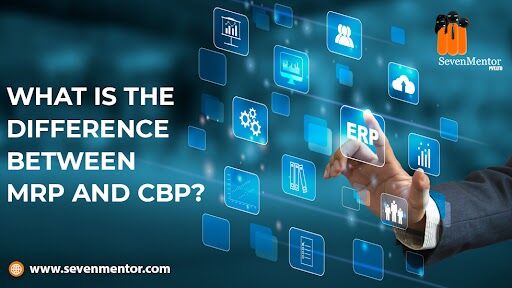What is the Difference Between MRP And CBP?
In SAP, material requirement planning (MRP) and consumption-based planning (CBP) are two different approaches used to manage and control the inventory of materials within the supply chain. Each method has its advantages and is suitable for specific scenarios. The following particular blog will discuss What is the Difference Between MRP And CBP?
Material Requirement Planning (MRP):
MRP is a planning method that calculates the quantity and timing of materials required for production or distribution based on demand forecasts, sales orders, and inventory levels. It takes into account various factors such as lead times, safety stock, and reorder points to ensure that materials are available when needed without causing excess inventory.
For Free, Demo classes Call: 020-71173116
Registration Link: Click Here!
Key features of MRP in SAP include:
- Forecast-based planning: MRP uses demand forecasts to plan and procure materials in anticipation of future requirements.
- Dependent demand: MRP considers the demand for material as dependent on the demand for the finished products that use it in their production.
- Procurement proposals: MRP generates procurement proposals like purchase requisitions or planned orders to replenish the required materials.
- Planning parameters: Users can set various planning parameters such as lot size, safety stock, and reorder points to control the planning process.
MRP is beneficial when there is a need for precise planning based on forecasted or known demands, particularly for complex manufacturing environments with multiple dependent materials and production stages.
Consumption-Based Planning (CBP):
CBP is a simpler approach that determines material requirements based on actual consumption and usage of materials. It doesn’t rely on demand forecasts or dependent demand calculations like MRP does. Instead, it uses historical consumption data to estimate future needs.
Note: Master SAP modules, gain hands-on experience with top-notch SAP training in Pune
Key features of CBP in SAP include:
- Historical consumption: CBP analyzes past consumption data to predict future material requirements.
- Reorder point planning: CBP uses a reorder point, which is the inventory level at which new replenishment orders are triggered.
- Safety stock: Users can set safety stock levels to account for variations in demand or supply lead times.
- Low complexity: CBP is less complex to set up and maintain compared to MRP.
For Free, Demo classes Call: 020-71173116
Registration Link: Click Here!
CBP is useful in scenarios where demand is relatively stable, and there is a desire for a simple and efficient planning process without the need for detailed forecasting or dealing with complex dependencies.
Do visit our channel to know more: Click Here
In summary, material requirement planning (MRP) in SAP is a demand-driven approach that considers forecasted demand and dependent demand to calculate material requirements, while consumption-based planning (CBP) relies on historical consumption data and reorder points to determine material needs. The choice between the two methods depends on the complexity of the supply chain, the level of demand predictability, and the desired planning precision.
Author:-
Prahlad Pawar
Call the Trainer and Book your free demo Class for SAP now!!!
© Copyright 2021 | SevenMentor Pvt Ltd.
